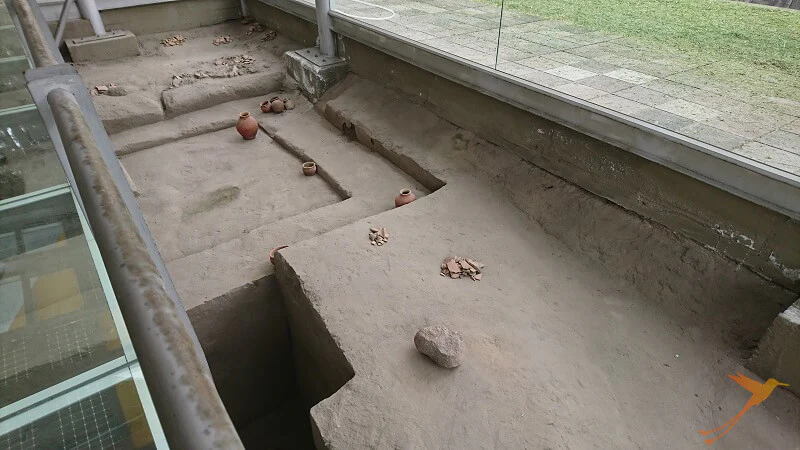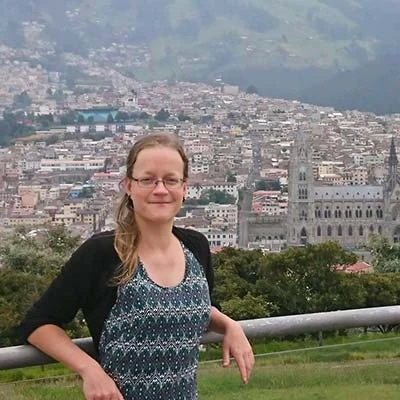
Visiting the Guayasamin museum
If you have a few hours in Quito, you should visit the Guayasamin Museum. The museum is located in the Bellavista district directly at the foot of the Parque Metropolitano. The location itself is impressive, because from here you have a magnificent view over Quito and the opposite mountain slopes.
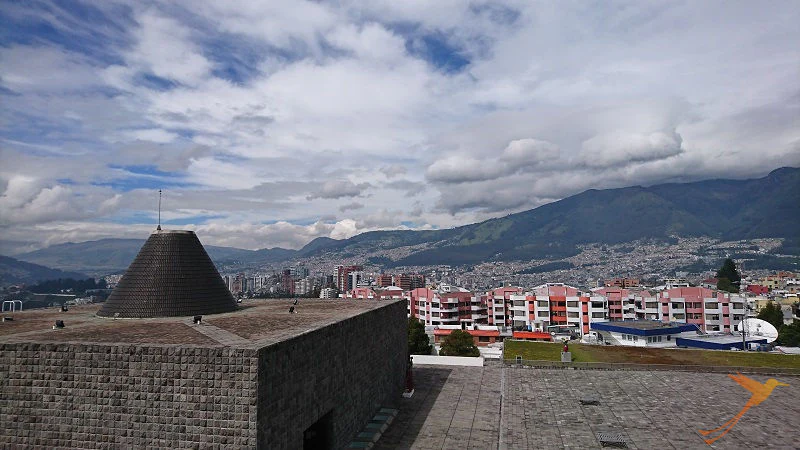
After buying your entrance ticket for $10, you can access the three parts of the museum area. It consists of Guayasamin’s residence, the Capilla del Hombre and a small archaeological site.
All the buildings were designed by Guayasamin himself and constructed by his brother, who was an architect.
Inside the residence you get interesting insights into the life and work of the famous Ecuadorian artist by a guided tour that takes about an hour. I was lucky to be the only guest and so I could also ask some questions, which were also answered detailed and vividly.
Guayasamin was born in 1919 as the oldest of 10 siblings and grew up in very simple circumstances. His father was of indigenous descent and worked as a tractor driver. His mother, a mestizo, worked in a small store and it was during this time that he began to paint on rice sacks that had been cut open and sewn into improvised canvases. In his first paintings, some of which are exhibited in his house, you can clearly see the stitching of the sacks.
Despite the financial difficulties, he managed to attend the art academy in Quito.
After graduating from college, he presented some of his works, which were not at all conform to the ideal of the art academy, at an exhibition in Guayaquil. At that time, Nelson Rockefeller, who later became U.S. Vice President, was in town and was so impressed by the works that he bought all of them. With the money he acquired, Guayasamin was able to travel around the U.S. for six months, studying and admiring the works of artists who had been his role models, such as El Greco, Goya and Picasso, in famous museums.
Later, he traveled through various countries of South America and especially perceived the poverty and oppression of the indigenous population. He assimilated these impressions from 1946 to 1952 in his first cycle of paintings Huacayñán – “The Way of Tears”. During his travels through Latin America, he also made close contacts and friendships with mainly left-wing politicians and artists such as Fidel Castro, Salvador Allende, Pablo Neruda and Gabriel García Marquez, whom he later also often portrayed.
Residence Guayasamin
Guayasamin’s home resembles an art and history museum, because during many years he collected works of art and historical objects, or exchanged his own works for those of other artists. For example, the door of a Spanish hacienda, various sacred sculptures and works by Picasso can be seen.
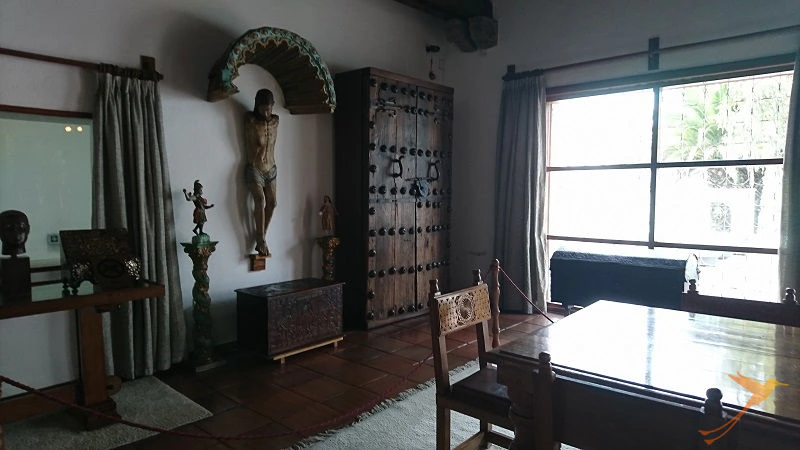
Besides a collection of pre-Columbian ceramics, there are also two considerably libraries in the house. He also collected with the intention of leaving his collection to the Ecuadorian people after his death.
Throughout the house there are sitting areas and large tables with chairs. Guayasamin’s house was a regular gathering place for parties, concerts, receptions and other events. Guayasamin was a generous host.
In the living area, a cozy and colorful sitting area is particularly eye-catching. Here, it was explained to me, Guayasamin “recovered” after working on works with regards to heavy contents of his second cycle, the Edad de la Ira – “Age of Rage”. These paintings reflect the impact of the Cold War on South America and the acts of violence, civil wars and coups that accompanied it. They also address the two World Wars and the Spanish Civil War. The paintings are mostly in shades of gray and ochre with red, white and black accents. Screaming faces and oversized bony limbs are often depicted. The works are striking in a somber, shocking way and one can well understand that the artist needed a pleasant retreat sometimes.
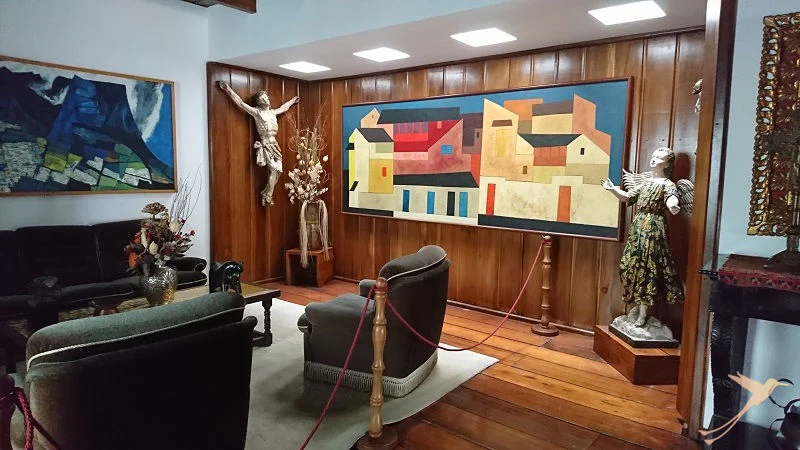
After visiting the living area, I was led into Guayasamin’s studio, which looked as if the painter had just left it. Paints, paint mixtures, brushes, spatulas and pallets lay on tables as if they could be used at any time. In addition to the painting utensils, there is also an extensive collection of records, because Guayasamin preferred to paint with background music that matched the mood of each work.
In a television set, a video can be seen in which the artist portrays the Spanish flamenco guitarist Paco de Lucía. This painting can also be seen in the studio.
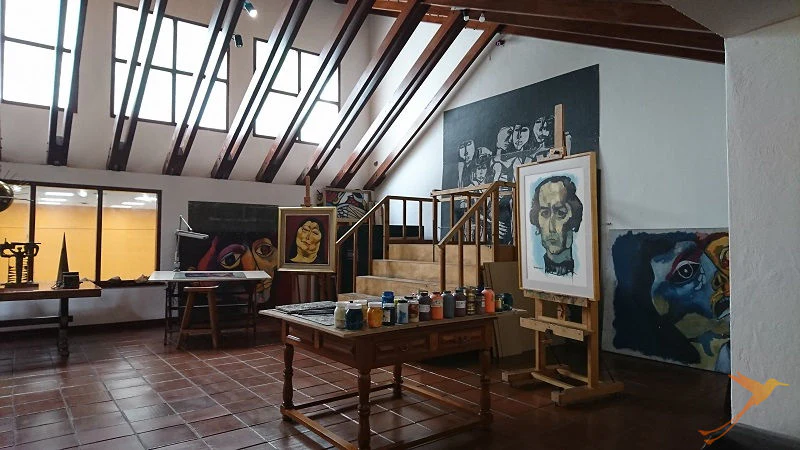
Capilla del Hombre
The second part of the museum is the Capilla del Hombre – “Chapel of Man” – which houses Guayasamin’s oversized works. The Capilla was a project Guayasamin began in 1995, it was planned to be a cultural center in honor of humanity, a place where the reflection of the mankind from its beginning until today would be possible.
In 2002, the Capilla was grandly inaugurated. Fidel Castro gave the speech and many politicians, artists and intellectuals were present.
Guayasamin himself was unable to witness the inauguration of his great dream – he died of a heart attack in the USA in 1999.
The Capilla del Hombre was declared “Proyecto Prioritario para la Cultura” (engl. „Priority project for the culture“) by UNESCO and “Cultural Heritage of Ecuador” by the former National Congress.
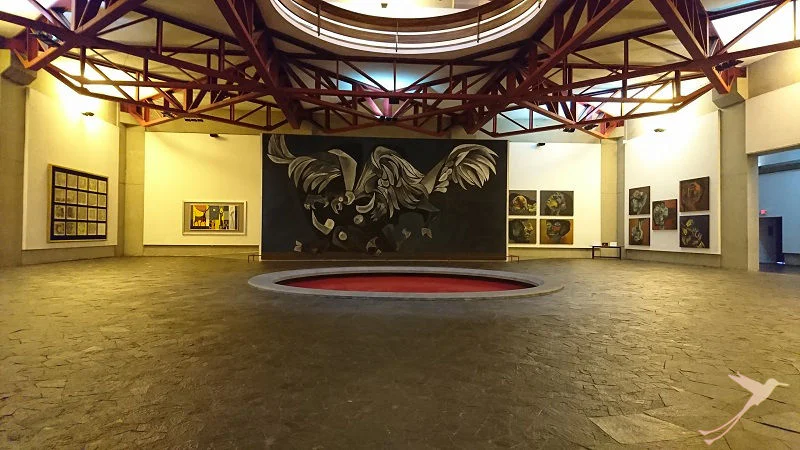
Archeological site
In the course of the works for the construction of the Capilla del Hombre, an important archaeological finding was made on the site, exactly on the day of Guayasamin’s death, March 10, 1999. 13 graves from pre-Inca times were found, estimated to be about 1000 years old. In the graves were found various offerings such as ceramic vessels with remains of corn cobs, carbonized corn and various seeds.
The vessels and the sites of the findings can currently be seen in the small exhibition behind the Capilla del Hombre.
